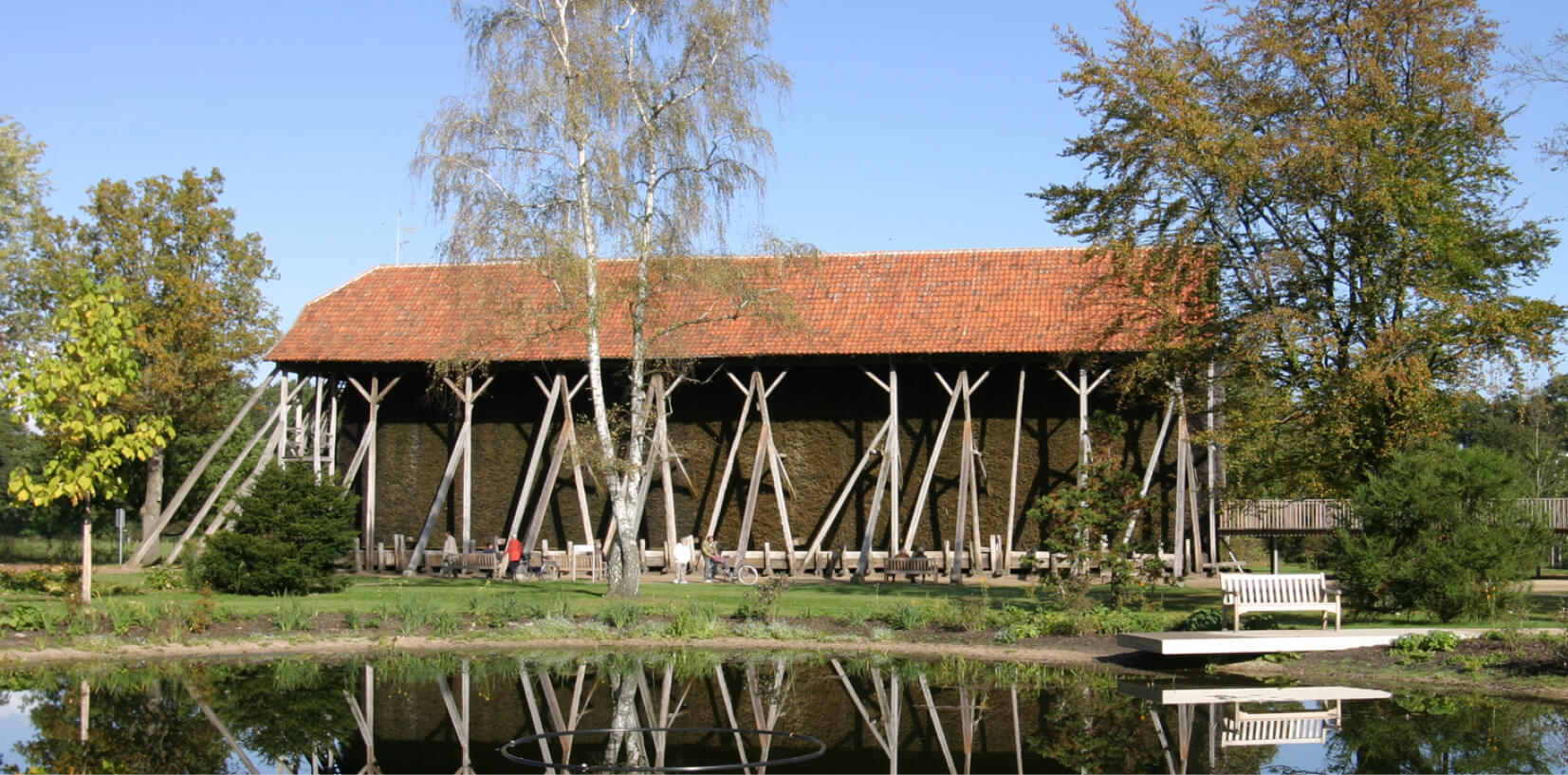With the current heat, a short trip to the Gottesgabe salt works is worthwhile. At the graduation house there, the water evaporates during salt extraction and so the surrounding air is cooled.

In many places only weak-percent brine was found. In order to extract salt from it, a large amount of water had to be evaporated, which resulted in a high fuel requirement. Salt boilers were therefore constantly looking for new methods of enriching the low-percentage raw brine. In the 16th century, straw grading in so-called lick works gradually gained acceptance. These were small wooden boxes in which bunches of straw were placed. In good weather, these were watered with brine by the “Lepperknechten”. In the 17th century, there was a transition to walls made of straw, which no longer had to be doused with brine, but were supplied by pipes from above. Also at the Gottesgabe salt works, a leakage works 60 feet long and 20 feet wide was built about 1605, which probably fell victim to the Swedes in 1647 during the 30 Years War.
The brine ran down the smooth straw tufts of the leak works too quickly, so that only a little water evaporated. After experiments with birch twigs at the end of the 17th century, the ideal grading material was found in blackthorn, the twigs of the blackthorn tree, because it proved to be particularly resistant to salt. The hard, bulky and thorny branches allow the construction of relatively thick layers. The brine trickles down the outer walls in fine droplets and the wind blowing along causes some of the water it contains to evaporate. The invention of this mandrel grading is attributed to the imaginative saline specialist Joachim Friedrich Freiherr von Beust.
In Bentlage, Freiherr von Beust had an almost 300-meter-long graduation house built, the first of its kind in Westphalia. The raw brine trickled down from a croft under the roof over the blackthorn branches and was strongly enriched depending on the weather. Fog, rain and frost hindered the grading process, while high temperatures and low relative humidity favored the process. Under optimal conditions, the low-percentage initial brine, whose salt content averaged about 9 percent, could be refined to a salt content of 18 to 22 percent. A higher concentration was not aimed at because then certain purification processes would no longer have been possible during the subsequent boiling.

The graduation plant was oriented in a northwest direction so that the wind from the main direction of incidence could blow sideways past the walls. A roof was constructed over the plant to prevent dilution of the brine during rainy weather. However, because the wind would accumulate under the overhang of the roof when the angle of incidence was steep, existing roofs were removed elsewhere or new graduation towers were built without a roof. The fact that the still existing parts of the graduation works in Bentlage are crowned with a roof can be considered a landmark of the Gottesgabe salt works.
Only parts of the original graduation house have been preserved. In 1940 a violent storm caused the 130 m long middle section to collapse and in 1945 the eastern end collapsed. Of the original graduation house, which von Beust built from 1743 to 1745, only the 35 m long western section has been preserved. The approx. 30 m long graduation tower section at the saline canal was rebuilt in 1966 in its old form.